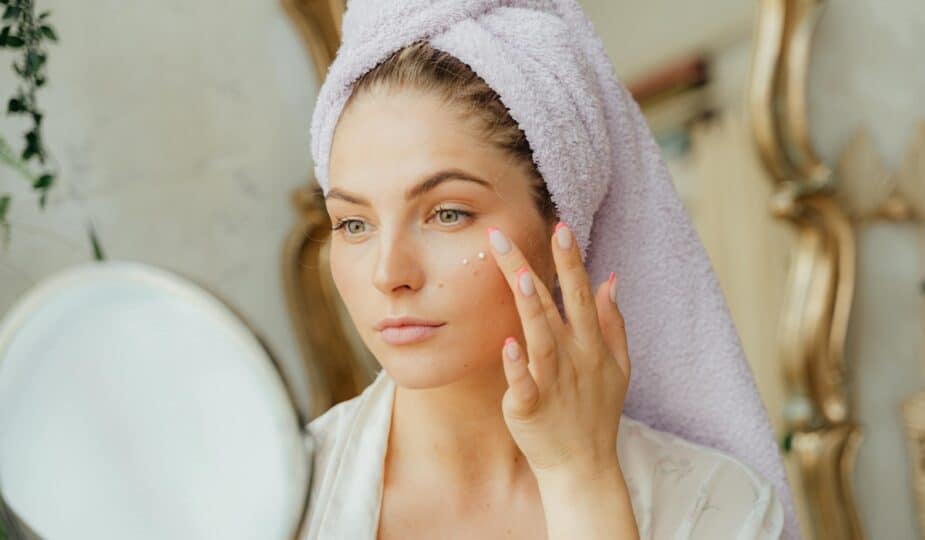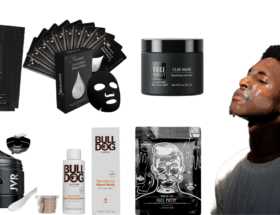Smooth, glowing and radiant skin can look incredible. However, for most of us, it isn’t something that comes naturally.
Your skin is your body’s largest and most visible organ. Just like with the rest of your body, your general health and wellbeing play a huge role in how your skin looks, including its smoothness, shine and glow.
Achieving glowing skin can require a combination of great skin care habits, good general health, the right cosmetics and skin care medications and, for many of us, the occasional visit to a local dermatologist’s office for certain procedures.
This can sound overwhelming, but the good news is that maintaining glowing skin is surprisingly simple once you’re aware of what to do, as well as what not to do.
Below, we’ve shared 16 techniques that you can use to get smooth, luminous skin that looks its best in any environment.
We’ve also explained what you should avoid to prevent your skin from taking on a dull, blotchy or inconsistent appearance.
1. Use an AHA or BHA to Strip Away Dead Skin Cells
Your skin naturally repairs itself through a process called epidermal turnover, in which new cells created in the basal layer of your skin travel to the surface and replace old ones. It’s normal for your skin to “turn over” once every 40 to 56 days.
As part of this process, the old, dead cells slowly detach from your skin and are eventually shed into the environment. When dead skin cells don’t fully detach, they can build up on the surface of your skin and may give it a dull, lifeless appearance.
Enter alpha-hydroxy and beta-hydroxy acids (AHAs and BHAs). These substances promote the shedding of dead skin cells.
They’re used to reduce the visibility of wrinkles, improve your skin’s texture and enhance its appearance.
For glowing, luminous skin, try adding a facial wash or exfoliating cleanser that contains an AHA or BHA to your daily skin care routine.
Popular AHAs include glycolic acid, lactic acid, citric acid, malic acid and tartaric acid, while the most common BHA is salicylic acid.
Products containing AHAs and BHAs are widely available online, from your local drug store or online store like Dr. Dennis Gross Skin Care.
2. Wash Your Skin Twice a Day to Remove Dirt and Excess Oils
Over the course of the day, your skin comes into contact with countless substances that have a negative effect on its appearance.
From pollutants and other particles in the air to dirt and bacteria, these substances can have an impact on your skin’s texture and shine.
When your skin is dirty, it may have a dull appearance, without the radiance that’s visible when it’s clean.
For healthier-looking skin, try to wash your face twice a day — once when you wake up, as well as once before you go to sleep.
This not only helps to give your skin a natural glow — it also helps to wash away bacteria, dead skin cells, sebum and other substances that can clog your pores and contribute to painful acne breakouts.
It’s also best to wash your face after you do anything that causes you to sweat, such as jogging or working out in the gym.
3. Moisturize Your Skin a Few Minutes After Showering
Moisturizers work by increasing the water content of your skin, helping it to look and function at its best.
When you moisturize, you trap moisture inside your skin. This allows your skin to function more effectively as a protective barrier.
Because hydrated skin is smooth, healthy skin, using a moisturizer is important for reducing the visibility of fine lines and wrinkles.
It also helps to prevent flaking — a common side effect of dry skin that can dull your skin’s appearance and reduce its shine.
To get the best results from your moisturizer, try to apply it within a few minutes of getting out of the shower.
Dry your body, making sure to leave a small amount of water on your face, then use moisturizer to lock in moisture and keep your skin hydrated throughout the day.
This not only helps to increase your skin’s moisture content — it’s also a good way to counter the dryness that’s often caused by AHAs and other popular exfoliants.
4. Look for a Moisturizer That Contains Hyaluronic Acid
Not sure which moisturizer to choose? While all moisturizers will enhance your skin’s ability to hold water and improve its appearance, you’ll generally get the best results from products that contain active ingredients proven to trap water inside your skin.
One such ingredient is hyaluronic acid — a glycosaminoglycan that binds to water to keep your skin moist, elastic and healthy.
Several studies have looked at the effects of hyaluronic acid on skin health, and the results are very positive.
In one study, women aged 30 and 60 were treated using a hyaluronic acid cream, as well as a non-therapeutic placebo.
The skin treated using hyaluronic acid displayed improvements in hydration and elasticity, as well as reduced wrinkling.
It’s worth noting that the hyaluronic acid cream had a low molecular weight, which may help to improve absorption.
When you’re comparing moisturizers, look for products that contain hyaluronic acid.
5. Moisturize Whenever Your Skin Starts to Feel Dry
While it’s always good to apply moisturizer after showering, you shouldn’t just use it as part of your morning or evening routine.
If you’re prone to dry skin, make sure to use moisturizer whenever your skin starts to feel flaky or dry.
Try keeping a small tube of moisturizer inside your bag when you’re out and about or at work — it can be extremely helpful for dealing with dry skin throughout the day.
6. Use Tretinoin to Get Rid of Lines, Wrinkles and Dull Skin
When it comes to improving your skin’s appearance, there’s one medication that stands above most others: tretinoin.
A topical retinoid, tretinoin is widely used for its anti-aging benefits. It works by peeling old skin cells and speeding up your epidermal turnover process, which can improve your skin’s texture, coloration and appearance.
The secret of tretinoin is that it’s not an overnight treatment. Unlike many over-the-counter skin care creams, you won’t suddenly wake up with glowing, smooth skin the first morning after you apply tretinoin.
In fact, your skin might look worse before it looks better. With tretinoin, it’s common to develop flaking, dryness and even changes in your skin tone during the first few weeks of use.
However, once tretinoin starts to work, the results can be significant. Think smoother skin, a far more consistent skin texture and real improvements in wrinkles, fine lines and the dullness that can rob your skin of its natural glow.
7. Avoid Washing Your Face With Hot Water
While washing your face is absolutely essential for optimal skin health, it’s important not to use overly hot water when you wash. Hot water can strip your skin of sebum, or natural oil, causing it to become dry. This can give your skin a dull appearance.
It may also increase your risk of developing side effects from skin medications like tretinoin or salicylic acid.
Instead of using hot water, gently wash your face using lukewarm water. Apply products using your fingertips in a circular motion, then use either cool or warm water to gently rinse your skin care products off once you’re finished.
This helps to reduce dryness and minimize skin irritation, helping your skin to look its best after you finish in the bath or shower.
8. Apply Sunscreen to Shield Your Skin From Damage
Many different things can damage your skin and reduce its glow, but one of the biggest culprits is ultraviolet (UV) radiation from bright, direct sunlight.
UV radiation harms your skin at a cellular level. It affects your cells’ DNA and causes your skin to age prematurely.
Over the long term, excessive exposure to sunlight can cause your skin to become thicker, drier, blotchier, more wrinkled and less elastic.
In fact, according to the Skin Cancer Foundation, photoaging (the type of premature skin aging that’s caused by UV radiation) is responsible for 90 percent of the visible changes to your skin that occur as you get older.
If you want to have glowing, smooth skin, it’s important to stay protected when you’re outdoors in sunny weather.
You can do this by shielding your face and other exposed skin from the sun with sunglasses, a wide-brimmed hat and other protective clothing.
You can also reduce the effects of sun exposure by using broad-spectrum, SPF 30+ sunscreen whenever you spend more than a few minutes outdoors.
Sun protection might seem like a boring aspect of skin care, but it can have a major impact on how your skin looks.
In fact, according to dermatologists, sunscreen (along with moisturizer) is one of the two most effective anti-aging products you can buy.
9. Choose Products That Contain Skin Brightening Vitamins
Vitamins aren’t just for helping your immune system — research shows that many vitamins are also linked to smoother skin, a better glow and fewer dark spots and other issues.
When you’re shopping for skin care products, check the active ingredients list for vitamin C and vitamin B3, or niacinamide. Vitamin C is a potent antioxidant that’s linked to numerous skin benefits, including slowing down the effects of aging on your skin.
Vitamin B3, or niacinamide, on the other hand, is also a powerful antioxidant that can stop skin from becoming red and irritated, reduce hyperpigmentation (blotchy skin coloration) and boost collagen production for smooth, glowing skin.
10. Keep Your Skin Type in Mind When Choosing Products
Achieving glowing skin is all about identifying the right products for your skin type, then making effective use of them. No two people have identical skin, meaning it’s important to choose products that suit you, not just the needs of others. For example, if you have oily skin, products that may give one person smooth, glowing skin may give you skin that feels greasy and wet.
On the other hand, if you have naturally dry or sensitive skin, products that are safe for others might cause your skin to become irritated and flaky.
When you’re shopping for a moisturizer, sunscreen and other products, check the label of each product to see if it’s made for a specific skin type. Try to prioritize products that suit your skin type, all while minimizing your use of ones that could cause problems.
Not sure what type of skin you have? You may want to consider meeting with a board-certified dermatologist to find out which types of products are best suited to your skin.
11. Try a Moisturizing, Nourishing Face Mask
Just about every drug store or cosmetics retailer offers a diverse range of masks designed to increase hydration, stimulate blood flow and make your skin glow.
While the evidence for masks increasing blood circulation or strengthening your skin barrier is mixed, many do help to give your skin a healthy glow, at least in the short term.
Look for masks that are made with nourishing active ingredients such as squalane, hyaluronic acid, vitamin C and others.
As always, you’ll get the best results by picking a mask that’s made with your specific skin type in mind.
12. If You Smoke, Make an Effort to Quit
Smoking is terrible for your skin, and no amount of skin care products, medications or makeup can cover up the long-term damage that cigarette smoke can cause.
In a study published in the journal Tanaffos, researchers found that smokers have a lower level of skin elasticity (the property that allows your skin to avoid wrinkling) than non-smokers.
They also noted that smoking can affect the skin’s color and cause issues such as inflammation.
Another study published in the American Journal of Public Health found that smokers are more likely to develop moderate or severe wrinkles than non-smokers.
Put simply, smoking isn’t good for your skin’s health, smoothness or appearance. If you smoke, try your hardest to quit.
Not only will your lungs, heart and other internal organs appreciate it — your skin will, too.
13. Minimize Stress and Frustration
Feeling stressed? While most of us think of stress as a purely psychological issue, stress can and often does have a visible impact on your skin.
When you’re feeling stressed, your skin can become less capable of repairing itself, leading to irritation, acne flare-ups and an increased risk of skin conditions such as eczema, psoriasis or general skin damage.
Needless to say, these things don’t exactly give your skin the smooth, glowing look most of us are aiming for.
To keep your skin looking its very best, try to minimize your exposure to sources of stress and frustration.
14. Eat a Balanced, Skin-Friendly Diet
A healthy, balanced diet doesn’t just benefit your internal health — it also helps to improve your skin’s function and appearance.
For beautiful skin, try to eat a balanced diet that’s low in sugar, salt and unhealthy fats and rich in fresh fruits, vegetables, healthy fats and lean protein sources.
Some research suggests that foods rich in omega-3 fatty acids, such as flax seeds, chia seeds, soybeans and most types of fatty fish, may help to prevent inflammatory skin conditions.
It’s also important not to neglect your dietary water intake. Try to drink at least eight tall glasses of water each day.
If you have an active lifestyle or live in a warm, humid area, you may need to drink even more water to stay properly hydrated.
15. Aim for Seven or More Hours of Sleep Per Night
The quality of your sleep has a huge impact on how your skin looks. Research shows that when people are sleep deprived, they’re more likely to be perceived as having hanging eyelids, redder eyes, more severe wrinkles and dark circles by their peers.
In short, there’s a reason it’s called beauty sleep. When you don’t sleep enough, there’s a major risk that your skin won’t look its best to other people.
The CDC recommends getting at least seven hours of sleep per night. You can achieve this by setting a regular bedtime and sticking to it, focusing on relaxation in the evening and limiting the amount of caffeine you consume, especially after midday.
16. Add a Good Quality Luminizer to Your Makeup Toolkit
While glowing skin begins with great habits and quality skin care medications, the right makeup can also have a huge impact on how your skin looks.
To give your skin a dewy, glowing look, make sure to keep a good quality luminizer inside your makeup bag.
Powder or liquid-based luminizers are both fine. You can use luminizer by dotting it on your face’s high points, such as your cheekbones and nose, then blending it.
Try to avoid applying luminizer to oily areas of your skin, as it can cause too much shine. For an even easier application process, try mixing luminizer with your foundation to create an all-around glow that’s consistent across your entire face.
Give Your Skin the Care it Needs
Few things look as impressive as glowing, flawless skin. Using the techniques above, you’ll be able to solve common skin issues, improve your skin’s hydration, and give it the smooth texture and glowing appearance you’ve always wanted.
References:
Koster, M.I. (2009, July). Making an epidermis. Annals of the New York Academy of Sciences. 1170, 7–10. Retrieved from https://www.ncbi.nlm.nih.gov/pmc/articles/PMC2861991/
Alpha Hydroxy Acids. (2020, August 24). Retrieved from https://www.fda.gov/cosmetics/cosmetic-ingredients/alpha-hydroxy-acids
10 Things to Try When Acne Won’t Clear. (n.d.). Retrieved from https://www.aad.org/public/diseases/acne/DIY/wont-clear
Harwood, A., Nassereddin, A. & Krishnamurthy, K. (2021, June 2). Moisturizers. StatPearls. Retrieved from https://www.ncbi.nlm.nih.gov/books/NBK545171/
Moisturizer: Why You May Need it if You Have Acne. (n.d.). Retrieved from https://www.aad.org/public/diseases/acne/skin-care/moisturizer
Pavicic, T., et al. (2011, September). Efficacy of cream-based novel formulations of hyaluronic acid of different molecular weights in anti-wrinkle treatment. Journal of Drugs in Dermatology. 10 (9), 990-1000. Retrieved from https://pubmed.ncbi.nlm.nih.gov/22052267/
Tretinoin Topical. (2019, March 15). Retrieved from https://medlineplus.gov/druginfo/meds/a682437.html
How to Care For Your Skin in Your 60s and 70s. (n.d.). Retrieved from https://www.aad.org/public/everyday-care/skin-care-basics/care/skin-care-in-your-60s-and-70s
Photoaging: What You Need to Know About the Other Kind of Aging. (2019, January 10). Retrieved from https://www.skincancer.org/blog/photoaging-what-you-need-to-know/
How to Select Anti-Aging Skin Care Products. (n.d.). Retrieved from https://www.aad.org/public/everyday-care/skin-care-secrets/anti-aging/selecting-anti-aging-products
Telang, P.S. (2013, April-June). Vitamin C in dermatology. Indian Dermatology Online Journal. 4 (2), 143–146. Retrieved from https://www.ncbi.nlm.nih.gov/pmc/articles/PMC3673383/
Yazdanparast, T., et al. (2019, February). Cigarettes Smoking and Skin: A Comparison Study of the Biophysical Properties of Skin in Smokers and Non-Smokers. Tanaffos. 18 (2), 163–168. Retrieved from https://www.ncbi.nlm.nih.gov/pmc/articles/PMC7230126/
Ernster, V.L., et al. (1995, January). Facial wrinkling in men and women, by smoking status. American Journal of Public Health. 85 (1), 78–82. Retrieved from https://www.ncbi.nlm.nih.gov/pmc/articles/PMC1615259/
Nathan, N. (2021, April 14). Stress may be getting to your skin, but it’s not a one-way street. Retrieved from https://www.health.harvard.edu/blog/stress-may-be-getting-to-your-skin-but-its-not-a-one-way-street-2021041422334
Thomsen, B.J., Chow, E.Y. & Sapijaszko, M.J. (2020, May 28). The Potential Uses of Omega-3 Fatty Acids in Dermatology: A Review. 24 (5), 481-494. Retrieved from https://journals.sagepub.com/doi/abs/10.1177/1203475420929925
Sundelin, T., et al. (2013, September 1). Cues of Fatigue: Effects of Sleep Deprivation on Facial Appearance. Sleep. 36 (9), 1355–1360. Retrieved from https://www.ncbi.nlm.nih.gov/pmc/articles/PMC3738045/
How Much Sleep Do I Need? (2017, March 2). Retrieved from https://www.cdc.gov/sleep/about_sleep/how_much_sleep.html



